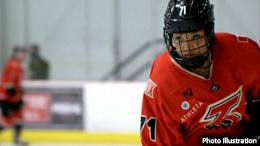Racism plagues community sports across Canada

One-quarter of Canadians feel that racism and discrimination are problems in community sports in the country, according to a survey published by Statistics Canada.
In addition, 18 percent of respondents said they have experienced or witnessed racism or discrimination in sports over the last five years, with race or skin colour the most cited reason at 64 percent.
Certain population groups were more likely to experience or witness unfair treatment, racism or discrimination in a sport, said StatsCan.
For example, lesbian and gay Canadians (42%) were more than twice as likely as heterosexuals (17%) to report having experienced or witnessed such behaviour.
Racialized people (26%) were also more likely than their non-racialized counterparts (15%) to have experienced or witnessed unfair treatment, racism or discrimination while playing a sport.
This was particularly true for Black (34%), Filipino (32%) and Korean (32%) people, who were among the most likely to report having experienced or witnessed these behaviours.
The motivation most often cited by victims and witnesses in incidents of discrimination was race or skin colour (64%), followed by physical appearance (42%) and ethnicity or culture (38%).
A significant share of victims and witnesses also reported sex (23%), language (22%), religion (21%) and sexual orientation (20%) as reasons for the discrimination committed against them or other sports participants.
No one is spared from discrimination and racism, whether they are participants, coaches, officials or sports team presidents, said the study authors.
However, at the time of the incident, most people who experienced or witnessed unfair treatment, racism or discrimination in a sport were participants, athletes or spectators, rather than those in positions of authority, such as coaches, instructors, referees, or sports managers.
A higher percentage of people who experienced or witnessed unfair treatment, racism and discrimination in the previous five years were either participants/athletes (80%) or spectators (26%) at the time of the incident, as opposed to coaches, referees or those occupying other non-athletic roles (5% to 15%).
Similar patterns were observed among both victims and witnesses. However, witnesses (85%) were more likely than victims (64%) to be participants or athletes at the time of the incident. Meanwhile, victims (42%) were more likely than witnesses (25%) to be spectators.
Participants and athletes (64%), spectators (39%), as well as coaches and instructors (36%) were also most often responsible for acts of discrimination. They were much more likely than referees or officials (10%), or managers, directors and administrators (13%) to commit such acts.
The most common types of discrimination reported by victims and witnesses involved being made to feel uncomfortable, such as through insensitive jokes or remarks (60%), or being called names, insulted or mocked (48%). This was followed by being ignored by others or excluded from conversations or group activities (44%) and people talking behind the person's back (42%).
However, a considerable proportion of victims and witnesses also reported having experienced or witnessed threats or harassment (20%), and physical attacks or assaults (8%).
In many cases, witnesses of discrimination, racism and unfair treatment sought to comfort the victim (42%) and/or defended or confronted the instigator (37%). Some also reported the incident (25%) and sought help from others (18%).
However, in many cases, witnesses observed the incident without taking any action to help the victim or stop the instigator (36%). Some witnesses even participated in the assault by joining in with the instigator (7%).
Many of these incidents were never reported by the victim or the witnesses (32%). Nevertheless, almost one-quarter (23%) of victims and witnesses said they reported at least one incident officially, that is, by filing, for example, an official complaint or report. An even larger proportion of victims and witnesses (35%) said they informally reported the incident, such as by telling a teammate, friend or family member, or discussing it on social media.
Sports participation in Canada
• Throughout Canada, people from all walks of life participated in some type of sport in the 12 months preceding the survey, with more than half (55%) of people aged 15 years and older reporting participating in sports such as soccer, ice hockey, swimming and running. Overall, men (62%) were more likely to have participated in sports than women (49%).
• Among those who participated in some type of sport over the previous 12 months, swimming was the most common (35%), followed by cycling (33%) and running (27%).
• The popularity of specific sports varied across racialized groups. Swimming topped the list overall but was the leading sport for only the non-racialized population (37%), West Asians (36%) and Koreans (36%).
• Running was the favourite sport among the greatest number of people in racialized groups. Chinese (40%), Japanese (35%), Southeast Asian (35%), South Asian (33%) and Black (32%) people participated in running more than any other sport, as well as people belonging to two or more racial or cultural groups (i.e., multiple racialized groups) (37%).
• Soccer was another popular sport among racialized groups. It was most common among the Arab population (40%) and was the second most common sport for Black respondents (31%).
• In general, the Canadian-born population was more likely to have participated in winter sports, such as ice hockey, skating, skiing and snowboarding, than immigrants, who were more likely to have played soccer, tennis or basketball.
• When asked about motivation, 82% of people who took part in sports cited physical health and fitness, followed by fun, recreation or relaxation (70%), mental health benefits (65%) and doing activities with friends (54%).
• Overall, 83% of sports players reported playing recreationally, outside of a club or league. This was sometimes done in combination with more structured recreational programs, through a club or league, such as group fitness, intramural sports or sport clubs.









